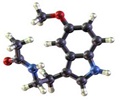Patients with Alzheimer’s disease and other forms of dementia experience the sundown syndrome – a sudden worsening of confusion, agitation and aggression at the end of the day, found study.

TOP INSIGHT
When the sun sets 20 per cent of all Alzheimer's patients experience increased bewilderment, anxiety, unease, disorientation, irritation and aggression. This phenomenon is called 'sundowning' or sundown syndrome.
Turn off the Aggression
The inner clock or circadian rhythm is located in the part of the brain called suprachiasmatic nucleus. One of the parts of the brain that control aggressive behaviour is called the ventromedial hypothalamus. Researchers have previously observed a connection between the two parts of the brain, though none have had knowledge of the specific circuit connecting them. Using electrophysiology and microscopy, the researchers measured the activity of the brain cells at main author Clifford Saper's laboratory in Boston. They also turned off parts of the cell circuit in the brains of mice to map the circuit and to identify the cells connecting the two parts of the brain. To map circuits in the brain you need a protein tool that can turn off the various cells to determine their function. Assistant Professor Timothy Lynagh has designed precisely such a tool.
'We take a receptor and mutate it, so that it is not sensitive to anything in the brain, but very sensitive to a particular drug. The tool works like an on/off switch. When you put the protein tool in the mouse brain, under normal circumstances, nothing will happen. But when you give the animal the drug, the cells that have the receptor on them will be turned off', Timothy Lynagh explains. Using this tool, the researchers can thus in theory turn off the cells that cause people suffering from sundown syndrome to become more aggressive at night.
May Be Used on Humans 20 Years into the Future
Even though the study was conducted on mice, the tool and the knowledge the research has generated can potentially be used in the treatment of humans. 'Because of the huge advances that are coming along with CRISPR, I would be tempted to say that based on a recent demonstration of gene therapy for brain disease, potentially, it could be used in the human brain in 20 years' time. Of course it needs a lot more research', he says.
 MEDINDIA
MEDINDIA




 Email
Email







